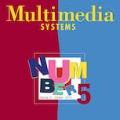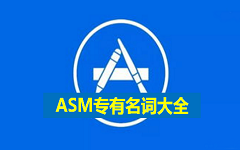Natural language (NL) based vehicle retrieval is a task aiming to retrieve a vehicle that is most consistent with a given NL query from among all candidate vehicles. Because NL query can be easily obtained, such a task has a promising prospect in building an interactive intelligent traffic system (ITS). Current solutions mainly focus on extracting both text and image features and mapping them to the same latent space to compare the similarity. However, existing methods usually use dependency analysis or semantic role-labelling techniques to find keywords related to vehicle attributes. These techniques may require a lot of pre-processing and post-processing work, and also suffer from extracting the wrong keyword when the NL query is complex. To tackle these problems and simplify, we borrow the idea from named entity recognition (NER) and construct FindVehicle, a NER dataset in the traffic domain. It has 42.3k labelled NL descriptions of vehicle tracks, containing information such as the location, orientation, type and colour of the vehicle. FindVehicle also adopts both overlapping entities and fine-grained entities to meet further requirements. To verify its effectiveness, we propose a baseline NL-based vehicle retrieval model called VehicleFinder. Our experiment shows that by using text encoders pre-trained by FindVehicle, VehicleFinder achieves 87.7\% precision and 89.4\% recall when retrieving a target vehicle by text command on our homemade dataset based on UA-DETRAC. The time cost of VehicleFinder is 279.35 ms on one ARM v8.2 CPU and 93.72 ms on one RTX A4000 GPU, which is much faster than the Transformer-based system. The dataset is open-source via the link https://github.com/GuanRunwei/FindVehicle, and the implementation can be found via the link https://github.com/GuanRunwei/VehicleFinder-CTIM.
翻译:基于自然语言的车辆检索是一项旨在从所有候选车辆中检索与给定 NL 查询最相似的车辆的任务。由于 NL 查询易于获得,因此这样的任务在构建交互式智能交通系统(ITS)方面具有良好的前景。目前的解决方案主要关注提取文本和图像特征,并将它们映射到相同的潜空间以比较相似性。然而,现有的方法通常使用依赖性分析或语义角色标注技术来查找与车辆属性相关的关键字。这些技术可能需要大量的预处理和后处理工作,而且在 NL 查询复杂的情况下抽取错误的关键字。为了解决这些问题和简化操作,我们借鉴命名实体识别(NER)的思想,构建了基于交通领域的车辆NER数据集FindVehicle。 它包含了42.3k标注的车辆轨迹NL描述,包括了车辆的位置、方向、类型和颜色等信息。 FindVehicle还采用了重叠实体和细粒度实体以满足进一步要求。为验证其有效性,我们提出了一种基线NL-based车辆检索模型VehicleFinder。实验表明,使用由FindVehicle进行预训练的文本编码器,VehicleFinder在基于UA-DETRAC的自制数据集上通过文本命令检索目标车辆时,实现了87.7%的精度和89.4%的召回率。 VehicleFinder的时间成本在一个ARM v8.2 CPU上为279.35 ms,而在一个RTX A4000 GPU上为93.72 ms,远远快于基于Transformer的系统。 该数据集可通过链接https://github.com/GuanRunwei/FindVehicle获得, 实现可通过链接https://github.com/GuanRunwei/VehicleFinder-CTIM找到。




